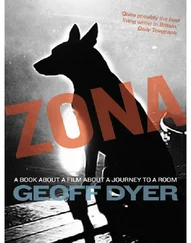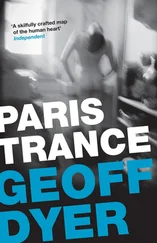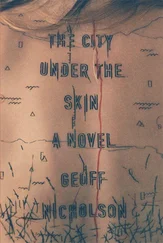Geoff Dyer
The Missing of the Somme
The anticipation of memory
Silhouette: seeking a comrade’s grave, Pilckem, 22 August 1917 (Imperial War Museum)
‘One thinks for the moment no other monument is needed’ — Lutyens
Temporary graves marked on the battlefield, Pozières, 16 September 1917 (Imperial War Museum)
The surrogate dead
Soldiers marching past the temporary Cenotaph, 11 November 1919 (Mail Newspapers plc)
The construction of memory
Memorial stones (Hulton Deutsch)
What has he seen?
Battle-fatigued soldier (Imperial War Museum)
‘And the poor horses . .’ — Constantine
The 58th (London) Division Memorial at Chipilly (Mary Middlebrook)
The weight of the past
Royal Artillery Monument: the shell-carrier (Jeremy Young)
Dead weight
Royal Artillery Monument: recumbent figure (Jeremy Young)
Charles Sargeant Jagger: memorial at Paddington station
(Jeremy Young)
They are all over the country, these Tommies . .
The Holborn Memorial (Jeremy Young)
Elland Memorial
(Jeremy Young)
The self-contained ideal of remembrance
The Streatham Memorial (Jeremy Young)
Time
The Southwark Memorial (Imperial War Museum)
Mourning for all mankind?
The Canadian Memorial near St Julien (Mark Hayhurst)
The only sound . .
Gassed by John Singer Sargent (Imperial War Museum)
The Canadian Memorial on Vimy Ridge
(Mark Hayhurst)
Grief . .
Canadian Memorial on Vimy Ridge (Mark Hayhurst)
‘Totenlandschaft’
Scene of devastation, Château Wood, Ypres, 29 October 1917 (Imperial War Museum)
The ruins of Ypres Cathedral, summer 1916
(Imperial War Museum)
The Monk by the Sea, by Caspar David Friedrich
(Staatliche Museen zu Berlin)
An Infinity of Waste
Passchendaele, November 1917 (Imperial War Museum)
‘Remember: the past won’t fit into memory without something left over; it must have a future.’
Joseph Brodsky
‘A kaleidoscope of hypothetical contingencies. .’
T.H. Thomas, reviewing Basil Liddell Hart’s
Some quotations are not attributed in the text; full sources for all citations can be found in the notes. Throughout, Remembrance with an upper case ‘R’ refers to ‘official’ procedures such as the annual service at the Cenotaph; remembrance with a lower case ‘r’ to the more general and varied ways by which the war is remembered.
When I was a boy my grandfather took me to the Museum of Natural History. We saw animals, reptiles and sharks but, today, what I remember most clearly are the long uneven lines of butterflies framed in glass cases. On small cards the names of every specimen on display had been scrupulously recorded.
Row after row, bright and neat as medal ribbons.
‘On every mantelpiece stand photographs wreathed with ivy, smiling, true to the past. .’
Dusty, bulging, old: they are all the same, these albums. The same faces, the same photos. Every family was touched by the war and every family has an album like this. Even as we prepare to open it, the act of looking at the album is overlaid by the emotions it will engender. We look at the pictures as if reading a poem about the experience of seeing them.
I turn the dark, heavy pages. The dust smell of old photographs.
The dead queuing up to enlist. Marching through the dark town, disappearing beyond the edge of the frame. Some turn up later, in the photos from hospital: marching away and convalescing, nothing in between. Always close to hand, the countryside seems empty in these later pictures, a register of absence. Dry stone walls and rivers. Portraits and group portraits. Officers and other ranks. The loved and the unloved, indistinguishable from each other.
‘Memory has a spottiness,’ writes Updike, ‘as if the film was sprinkled with developer instead of immersed in it.’ Each of these photos is marred, spotted, blotched; their imperfections make them seem like photos of memories. In some there is an encroaching white light, creeping over the image, wiping it out. Others are fading: photos of forgetting. Eventually nothing will remain but blank spaces.
A nurse in round glasses and long uniform (‘Myself’ printed beneath in my grandmother’s perfect hand). A group of men in hospital. Two with patches over their eyes, three with arms in slings. One
in his ghastly suit of grey,
Legless, sewn short at the elbow.
A stern-faced sister stands at the end of the back row, each name diligently inked beneath the picture. My mother’s father is the second on the left, in the back row.
Born (illegitimate) in Worthen in Shropshire, eighteen miles from Oswestry where Wilfred Owen was born. Farm labourer. Able only to read and write his name. Enlisted in 1914. Served on the Somme as a driver (of horses), where, according to family legend, he once went up to the front-line trenches in place of a friend whose courage had suddenly deserted him. Later, back in the reserve trench, he shovelled the remains of his best friend into a sandbag. (Every family has the same album, every family has a version of the same legend.) Returned to Shropshire in 1919 and resumed the life he had left.
Worked, went to war, married, worked.
He died aged ninety-one, able still only to write his name.
Everything I have said about my grandfather is true. Except he is not the man second from the left in the photograph. I do not know who that is. It makes no difference. He could be anyone’s grandfather.
Like many young men, my grandfather was under age when he turned up to enlist. The recruiting sergeant told him to come back in a couple of days when he was two years older. My grandfather duly returned, added a couple of years to his age and was accepted into the army.
Similar episodes are fairly common in the repertoire of recruitment anecdotes, but I never doubted the veracity of this particular version of it, which my mother told several times over the years. It came as a surprise, then, to discover from his death certificate that my grandfather was born in November 1893 (the same year as Owen), and so was twenty when war broke out. One of the commonly circulating stories of the 1914 generation had been so thoroughly absorbed by my family that it had become part of my grandfather’s biography.
He is everyone’s grandfather.
Seven-thirty a.m. Mist lies over the fields of the Somme. Trees are smudged shapes. Nothing moves. Power lines sag and vanish over absent hedges. Birds call invisibly. Only the road can be sure of where it is going.
I stop for breakfast — an apple, a banana, yoghurt slurped from the carton — and consult the map I bought yesterday. A friend who was driving from Paris to catch a dawn ferry at Calais had given me a lift to Amiens. From there I hitched in the direction of Albert because, from my newly acquired map, it was the nearest station to the villages whose names I vaguely recognize: Beaumont-Hamel, Mametz, Pozières. . I want to visit the cemeteries on the Somme but have no clear idea of what they are like or which ones are particularly worth visiting. On my map, near Thiepval, is printed in heavy type: ‘Memorial Brit.’ When I began hitching this morning, I did not know what I would find or where I would go — I still don’t, except that at some point in the day I will visit Thiepval. For now I cram everything back in my rucksack and continue walking.
Читать дальше












